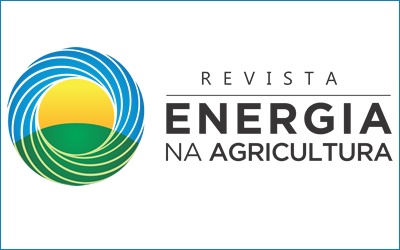PRODUÇÃO DE BIOMASSA DO FEIJÃO COMUM FERTIRRIGADO COM DOSES DE VINHAÇA
DOI:
https://doi.org/10.17224/EnergAgric.2023v38n3p20-27Abstract
The physiological and morphological changes of plants limited by drought influence their dry mass, their productivity and depend on the amount of water available in the environment and the efficiency of its use. The objective was to evaluate the dry mass of bean leaves fertirrigated with vinasse submitted to rainfed and irrigated water regimes. The soil in the experimental area is classified as Dystroferric Red Latosol (LVdf), typical, medium texture, cerrado phase. The experimental design used was randomized blocks, analyzed in a 4 × 2 sub-subdivided plot, with three replications. The treatments consisted of four doses of vinasse (0, 100, 200 and 300 m3 ha-1); and two water regimes (irrigated and rainfed). Fertirrigation with vinasse was carried out 50% of the dose before planting and the other 50%, according to the treatments, 50 days after planting; bean seeds of the cultivar BRS Estilo were used. The morphological characteristics were carried out, in the central lines of each plot, quantifying: dry mass of leaves. The production of bean biomass (cultivar BRS Estilo) is affected by the water regime (irrigated and rainfed).
Published
How to Cite
Issue
Section
License
Copyright (c) 2024 ENERGY IN AGRICULTURE

This work is licensed under a Creative Commons Attribution-NonCommercial-NoDerivatives 4.0 International License.
Esta revista proporciona acesso publico a todo seu conteúdo, seguindo o princípio que tornar gratuito o acesso a pesquisas gera um maior intercâmbio global de conhecimento. Tal acesso está associado a um crescimento da leitura e citação do trabalho de um autor. Para maiores informações sobre esta abordagem, visite Public Knowledge Project, projeto que desenvolveu este sistema para melhorar a qualidade acadêmica e pública da pesquisa, distribuindo o OJS assim como outros software de apoio ao sistema de publicação de acesso público a fontes acadêmicas.





